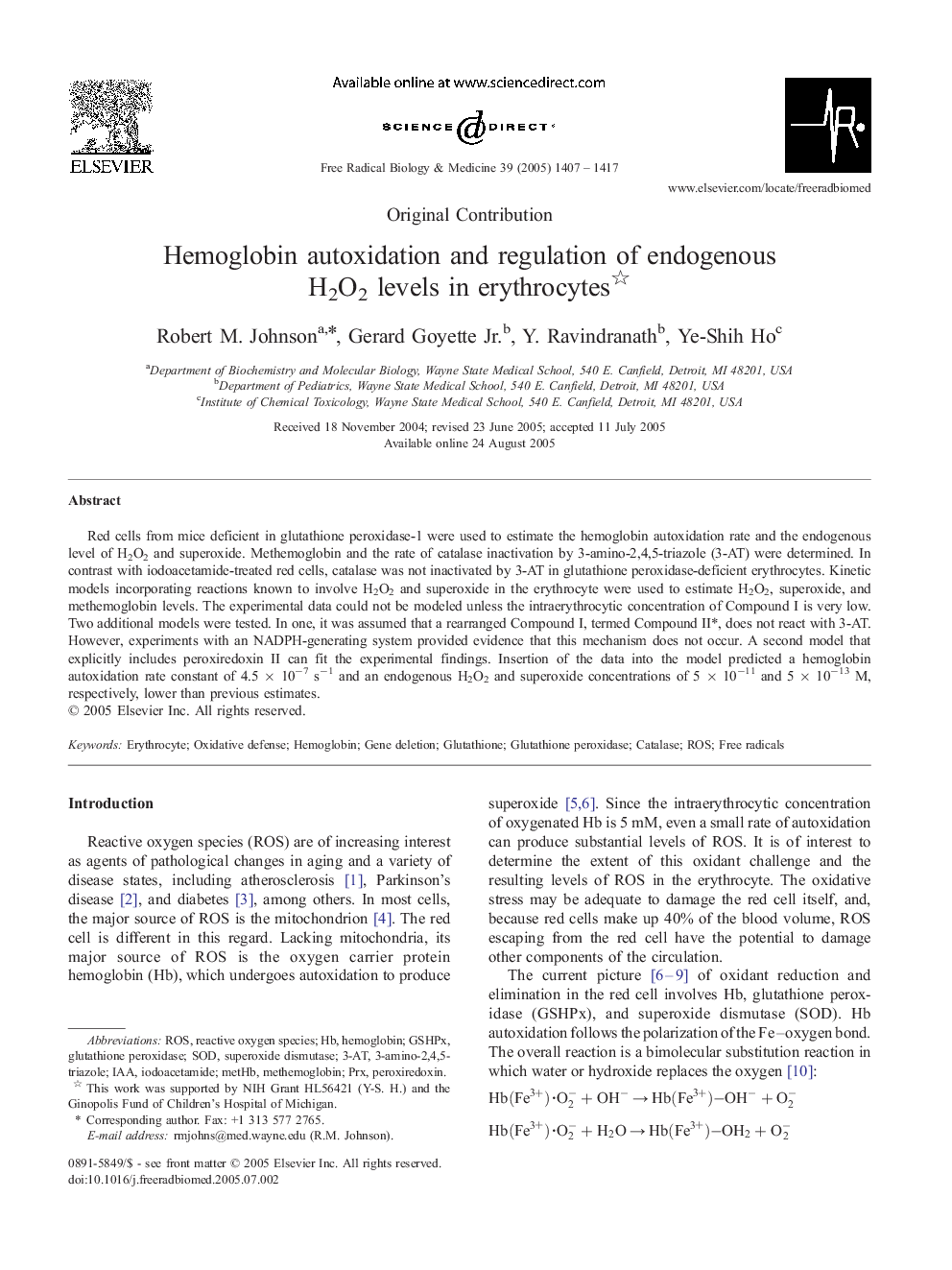| Article ID | Journal | Published Year | Pages | File Type |
|---|---|---|---|---|
| 10738834 | Free Radical Biology and Medicine | 2005 | 11 Pages |
Abstract
Red cells from mice deficient in glutathione peroxidase-1 were used to estimate the hemoglobin autoxidation rate and the endogenous level of H2O2 and superoxide. Methemoglobin and the rate of catalase inactivation by 3-amino-2,4,5-triazole (3-AT) were determined. In contrast with iodoacetamide-treated red cells, catalase was not inactivated by 3-AT in glutathione peroxidase-deficient erythrocytes. Kinetic models incorporating reactions known to involve H2O2 and superoxide in the erythrocyte were used to estimate H2O2, superoxide, and methemoglobin levels. The experimental data could not be modeled unless the intraerythrocytic concentration of Compound I is very low. Two additional models were tested. In one, it was assumed that a rearranged Compound I, termed Compound II*, does not react with 3-AT. However, experiments with an NADPH-generating system provided evidence that this mechanism does not occur. A second model that explicitly includes peroxiredoxin II can fit the experimental findings. Insertion of the data into the model predicted a hemoglobin autoxidation rate constant of 4.5Â ÃÂ 10â7 sâ1 and an endogenous H2O2 and superoxide concentrations of 5Â ÃÂ 10â11 and 5Â ÃÂ 10â13 M, respectively, lower than previous estimates.
Keywords
Related Topics
Life Sciences
Biochemistry, Genetics and Molecular Biology
Ageing
Authors
Robert M. Johnson, Gerard Jr., Y. Ravindranath, Ye-Shih Ho,
